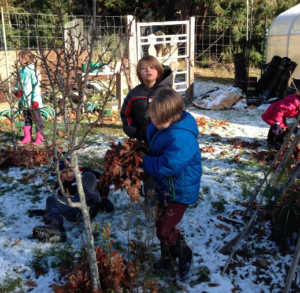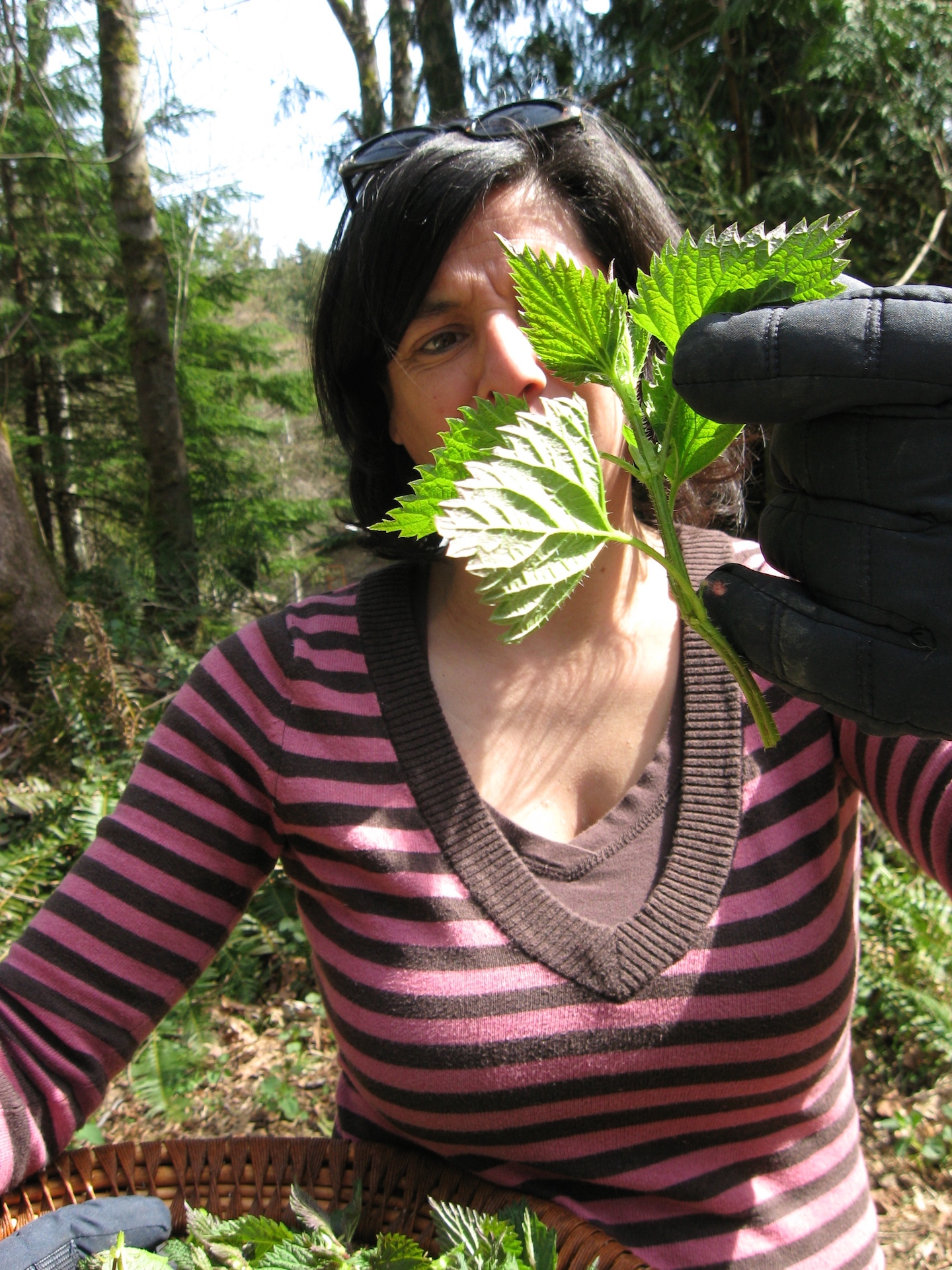 December was ushered in with the Great Bigleaf Rake-Up at the school garden. With maple leaves buried under a dusting of crunchy snow, blue sky above, Galiano School kids gathered around two large maple trees on the school property to learn about densely rich maple leaves and the value they bring to other plants when composted. The kids were divided into four teams: Calcium, Magnesium, Potassium, and Nitrogen, and each team learned some interesting facts about these four elements that figure prominently in maple leaves. What also became quickly apparent was how humans and plants require the same nutrients in order to thrive! For example, blossom End Rot in tomatoes and osteoporosis in humans are both related to calcium deficiency. In another example, magnesium is required by plants to process and use amino acids, vitamins, and proteins, and similarly for humans, magnesium is used to process other elements, notably calcium and potassium. Whereas magnesium deficiency will result in yellow, veiny leaves in plants, a deficiency in humans will impact the functioning of muscles and organs.
December was ushered in with the Great Bigleaf Rake-Up at the school garden. With maple leaves buried under a dusting of crunchy snow, blue sky above, Galiano School kids gathered around two large maple trees on the school property to learn about densely rich maple leaves and the value they bring to other plants when composted. The kids were divided into four teams: Calcium, Magnesium, Potassium, and Nitrogen, and each team learned some interesting facts about these four elements that figure prominently in maple leaves. What also became quickly apparent was how humans and plants require the same nutrients in order to thrive! For example, blossom End Rot in tomatoes and osteoporosis in humans are both related to calcium deficiency. In another example, magnesium is required by plants to process and use amino acids, vitamins, and proteins, and similarly for humans, magnesium is used to process other elements, notably calcium and potassium. Whereas magnesium deficiency will result in yellow, veiny leaves in plants, a deficiency in humans will impact the functioning of muscles and organs.
The teams then gathered up fallen leaves and laid them around garden beds and the fruit trees in the school garden. Our garlic, kale, chard, and fruit trees were tucked in with several layers of rich maple leaves.
In our fragile Coastal Douglas Fir ecosystem, bigleaf maples can be seen as competitors to slower growing species such as the hemlock, Douglas fir, grand fir, and sitka spruce (Thomas, K.D., 1999; Haeussler S. et al 1990). Bigleaf maples have a large canopy that blocks light to trees below; their heavy litterfall can smother slower-growing saplings; maples have a shallow and wide-spreading root system that likely has a competitive advantage in shallow soils. However, bigleaf maples can play a significant role in nutrient cycling (Turk, 2003). As the leaves decompose, elements inside the leaves make nutrients available for biological growth. The forest floor around bigleaf maples is significantly high in available nutrients, most notably nitrogen, potassium, calcium and magnesium, and contains higher levels of most nutrients than conifer litterfall. Another bonus for the garden is that maple leaves decompose and lose their mass relatively quickly, thus rapidly cycling nutrients.
Bigleaf maples also play an important role in enhancing biodiversity by hosting a large number of epiphytes. An epiphyte is a plant that grows non-parasitically upon another plant, and derives its moisture and nutrients from the air, rain and sometimes debris from other organisms. Ferns, lichens, and mosses are examples of epiphytes. Maples are very popular hosts!
As we arranged the leaves over the beds and stood back to admire the russet hues against the snow, my mind jumped ahead to spring. It won’t be long before we’ll be drizzling syrup over Maple Blossom Fritters.




Leave A Comment
You must be logged in to post a comment.